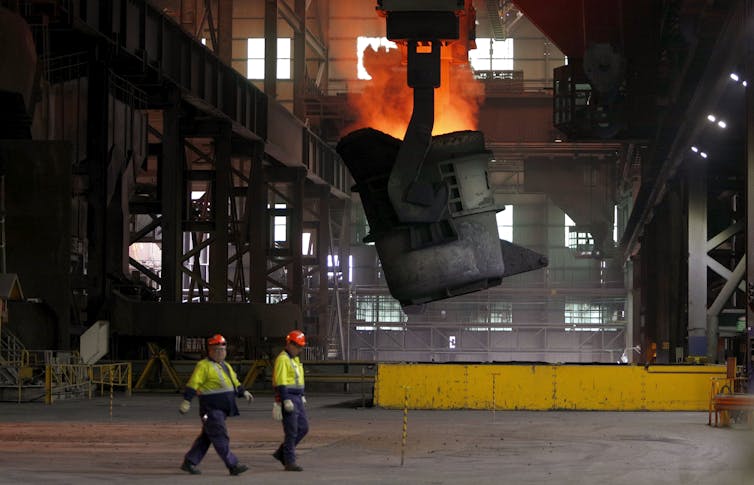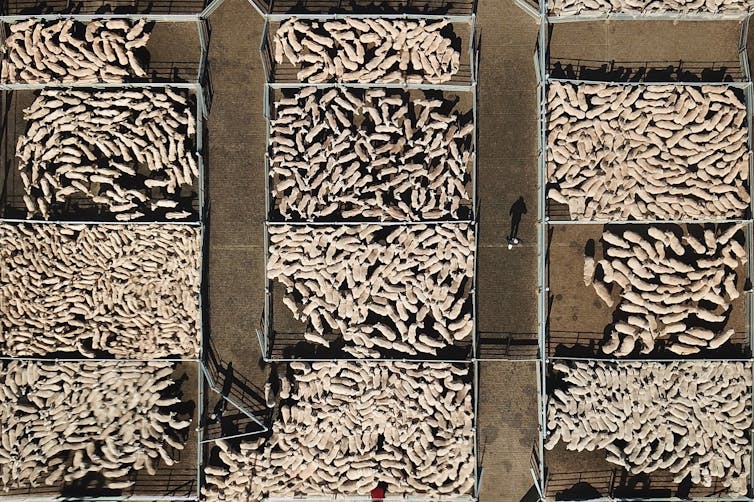Source: The Conversation (Au and NZ) – By Frank Jotzo, Professor, Crawford School of Public Policy and Head of Energy, Institute for Climate Energy and Disaster Solutions, Australian National University
A zero-carbon mindset must “become the new normal” in Australia, according to a much-anticipated report from the federal government’s independent climate advisory body.
The report, released today by the Climate Change Authority, describes how Australia can meet the crucial target of net-zero emissions by 2050.
The authority does not attempt to solve the conundrum of how to broaden and strengthen Australia’s climate policy suite. But it shows in detail how a low-emissions economy can be achieved. It urges Australian governments, businesses and the community to get on with the decarbonisation task. It can help infuse policy ambition for governments and set expectations for investors and the public.
As the report makes clear, a huge national effort is needed. Mature technologies should be quickly deployed while emerging technologies develop further. Barriers must be overcome and opportunities seized. The net-zero goal should become front of mind for business, investors and governments.
Pathways to net-zero
The authority’s report is formally known as the sector pathways review. It was undertaken at the request of the federal parliament.
Australia has committed to reducing carbon emissions to net zero. This report is the most important analysis to date on how the country might get there.
The authority’s analysis is comprehensive, fine-grained and deeply researched. It shows how net zero would be achieved through action in Australia, rather than assuming we might cover the shortfall by buying international emissions credits.
It relies on available and achievable technologies, rather than unspecified future solutions. As the authority makes clear, “Waiting for new, better, cheaper technologies is tantamount to choosing to continue to emit.”
Both points are in contrast to the net-zero plan by the previous government, and earlier work by the authority, among others.
The report uses modelling the authority commissioned from Australia’s national science agency, the CSIRO. The modelling examined two scenarios, one arriving at net zero in 2050, the other in 2040. It also includes an assessment of possible residual emissions at 2050, derived from detailed separate analysis.
–
Sector snapshots
The report splits the economy into six sectors, taking the same approach as the federal government’s own net-zero plan currently being developed.
It paints a picture of a modern, prosperous Australian economy by mid-century. In brief, sector by sector:
1. Electricity and energy
Electricity supply will be decarbonised through wind and solar power coupled with energy storage, and greatly scaled up to electrify the whole economy.
All scenarios have electricity emissions falling to near zero. This is now regarded as a near certainty in expert circles. The shift from coal to renewables is already happening fast, driven by the exit of old coal plants and the low cost of solar and wind power, supported by policy.
2. Transport
Transport decarbonisation is a story of electric vehicles, more rail and public transport in a shift away from private cars, and also the prospect of carbon-neutral fuels.
The transition will naturally be gradual, limited by vehicle stock turnover rates, timelines for building infrastructure, and increasing transport demand. But the authority envisages deep cuts by the 2040s.
3. Industry and waste
Stripping emissions from industry relies on electrification and new technologies.
Heavy industry emissions have not been declining. But the federal government’s safeguard mechanism, which targets Australia’s biggest emitters, is starting to work. In addition, low-emissions technologies are developing and maturing.
Nevertheless, the authority’s scenarios show notable remaining emissions from industry. The key is for governments to provide strong commercial incentives to cut emissions – such as those evolving under the safeguard mechanism – and for industry to avoid building new high-emitting facilities.

Daniel Munoz/AAP
4. Agriculture and land
Together, land and agriculture are projected to go below zero emissions well before 2050, as vegetation cover and forests are expanded. This would lead to the takeup of carbon dioxide (CO₂) in vegetation, outweighing remaining emissions from livestock and cropping.
Overall, land use change and forestry has turned from a large combined source of emissions to a “sink” (or carbon absorber) over the past 20 years. This accounts for most reductions in national emissions over the past two decades.
Continuing and accelerating this trend is a huge opportunity. It will require potentially tough decisions on land use, such as converting grazing land back to natural vegetation. It will also require changing farming practices, and new technologies in areas such as reducing livestock emissions.
5. Resources
The authority considers the resources sector, including mining and gas extraction and processing, as being on a steady path to near-zero emissions, including through electrification of mining and gas processing, and carbon capture and storage.
The analysis does not include the emissions of Australia’s fossil fuel exports, because they are burned overseas.
Likewise, contributions that Australia can make to decarbonisation elsewhere in the world, by producing and exporting renewables-based, energy-intensive commodities and fuels, are not counted in the net-zero target.
6. Built environment
Direct emissions from building, principally from heating, cooling and cooking, can be eliminated through electrification, coupled with much greater building efficiency.
Compensating for remaining emissions to achieve net zero
After each sector has done its best to decarbonise, getting to net zero will require removing remaining CO₂ emissions from the atmosphere.
The precise extent of CO₂ removal will become a topic of intense interest in coming years. One scenario outlined by the authority puts the required annual removal in 2050 at about 30% of current annual emissions.
The authority assumes this will be achieved via greater carbon uptake on the land, and to a small extent through technological means.

Dean Lewins/AAP
Reality may be better than modelling suggests
The history of modelling emissions cuts in Australia is one of underestimating the possibilities.
For example, modelling done for the Garnaut Climate Change Review of 2008 and 2011 underestimated the scope for affordable low-emissions energy, and consequently overestimated the costs of reductions.
A review published by the authority in 2014 showed emissions increasing by nearly 30% from 2005 to 2030 without policy, flatlining under a moderate carbon price, and decreasing by about 20% under a high carbon price.
Reality has turned out far better – even though national climate policy was severely limited for most of that time.
A plausible way forward, without the tough policy answers
The report paints a plausible picture of the path to net-zero emissions in Australia. The government’s forthcoming sector plans, and similar exercises by state governments, will provide further detail.
The authority is notably cautious on policy. It calls for every tool in the kit to be used, but largely leaves open the question of new policy instruments.
So what about the question of carbon pricing – the hot potato at the centre of Australia’s long-running climate policy woes?
The authority notes a broad-based “consistent price for emissions” is generally seen as the most efficient policy. But it does not recommend a comprehensive carbon price, pointing to the inherent “political and social challenges”.
Instead, it recommends expanding and strengthening existing mechanisms. These include the safeguard mechanism, Australia’s carbon credit scheme, the federal government’s vehicle efficiency standard, and the capacity investment scheme for renewable electricity and energy storage.
Notably, the authority holds back on proposing new policy approaches specific to each sector, such as agriculture.
It makes sense to build on what we have. And incrementalism is often seen as the only viable option while Australia’s politics remains divided over climate policy.
Yet the the huge task and opportunity in the shift to net zero cry out for comprehensive, and overall far stronger, policy action.
This report provides a solid information base for the many debates to come. The next, highly anticipated decision will be Australia’s 2035 national emissions target, on which the authority is expected to provide advice to the government later this year.
![]()
In addition to his academic role, Frank Jotzo advises Australian governments as lead of the federal government’s carbon leakage review, chair of the Queensland clean economy expert panel, and member of the New South Wales net zero commission. He leads research projects funded by a government foundation, a philanthropic donor and the Australian Research Council.
– ref. Can we really reach net zero by 2050? A new report maps out Australia’s path in more detail than ever before – https://theconversation.com/can-we-really-reach-net-zero-by-2050-a-new-report-maps-out-australias-path-in-more-detail-than-ever-before-235959








